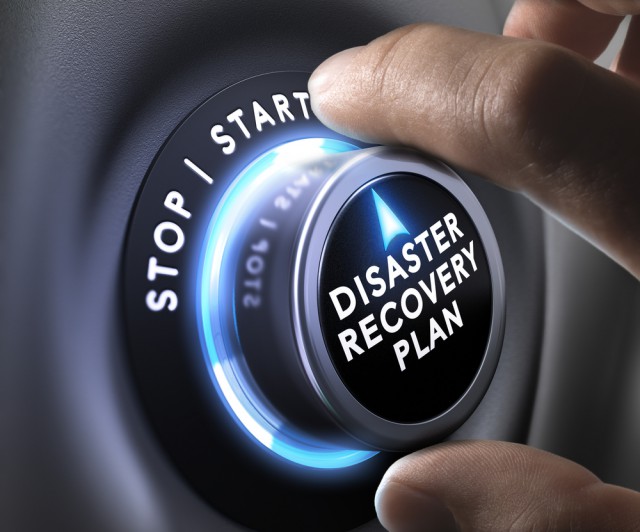How to maintain contact center operations during a crisis

As the prevalence of natural disasters and cyberattacks increases, it becomes essential that leaders prioritize robust infrastructure. Oftentimes, communications capabilities, including contact centers and customer service support lines, are the most vulnerable during emergencies -- which is exactly when these functions become most necessary.
Well-maintained and protected infrastructure is even more important when you consider the ramifications of an outage. Organizations take 212 days on average to detect a breach and 75 more days to contain it -- that means nearly a year of interrupted operations post-attack. During this time, consumers may be unable to receive critical, even life-saving information.
According to industry research, between the start of 2022 and 2023, ransomware attacks nearly doubled in frequency. Moreover, natural disasters have been intensifying rapidly -- experts predict accelerating disruptions ahead. From heatwaves in Europe to Canadian wildfires, climate change has imperiled critical infrastructure. In the long term, these forces can have devastating impacts on client interactions.
Following disasters, organizations need fast, efficient restoration across operations, contact centers and communication portals. Driving down mean time to recovery (MTTR) is key. Yet MTTR alone falls short of full disaster recovery. Also crucial are customer and client communications that maintain access to vital information and services amid outages. In this fraught environment, adopting contact center-as-a-service (CCaaS) has become the most dependable way to preserve communications through breaches.
Containing costs while improving experiences: The promise of CCaaS
For some leaders, CCaaS remains unfamiliar -- yet its market has grown exponentially in recent years. In 2022, the CCaaS market was valued at $4.42 billion; by 2030, experts predict its market share will reach $16.43 billion, representing an 18 percent CAGR.
But what is CCaaS, exactly? These platforms offer customers, clients and other stakeholders instant access to contact centers, enabling efficient, seamless customer service. Unlike traditional on-premises setups, CCaaS operates via the cloud, spanning channels from voice calls to various online interactions.
When organizations adopt CCaaS, actual service representatives spend less time with each customer. Heightened efficiency is unlocked through a couple of avenues. For one, contact centers can automatically gather crucial information from each interaction to build a complex client profile, expediting future interactions. Effective cloud-based CCaaS solutions also use customer self-servicing AI to address common customer concerns and redirect them to less labor-intensive tools like self-service or chatbots.
Additionally, CCaaS solutions decrease customer waiting times and increase efficiency during key touchpoints, translating to higher end-user satisfaction. Modern customers and employees anticipate a more expedient user experience in the digital age, and CCaaS provides that level of customer service via 24/7 availability and AI-augmented services.
However, efficiency is not the sole benefit of CCaaS. These solutions are also vital in the wake of a ransomware attack, at which time customers need reliable service more than ever.
Why CCaaS is Vital in a Post-Breach Landscape
It’s no secret that a breach can severely disrupt an organization’s operations, including its customer-facing contact services. But CCaaS helps to enable continuous communication capabilities. Consider a healthcare provider that suffers a ransomware attack, losing access to critical systems that diagnose and treat patients. Even with parts of this infrastructure disabled, a resilient CCaaS solution -- hardened with cybersecurity protections — keeps information flowing to impacted stakeholders. As a result, patients retain access to essential services, ensuring their needs are efficiently met.
As healthcare entities face growing threats, protections against ransomware become even more important. The personal data housed by healthcare organizations is an enticing target for hackers. Consequently, it’s critical that leaders choose a CCaaS solution with rigorous security standards.
Verifying a provider's security is imperative -- at a minimum, their response plan should interface directly with an organization’s IT team. Optimal measures include managed firmware upgrades, multifactor authentication (MFA) and single sign-on (SSO).
CCaaS: The Takeaway for Decision-Makers
With cyber threats becoming so pervasive, it’s smartest to assume your organization will suffer an attack soon. To prepare for this inevitability, proactively adopt contingencies like incident plans, data backups and disaster recovery services suited to your needs.
Recovery is only one part of post-breach planning. Stakeholders will still expect uninterrupted service despite successful attacks. Entities like government and healthcare in particular -- custodians of sensitive data -- must specifically prioritize continuous communication.
When evaluating response protocols, consider stakeholder needs after incidents. Could we adequately inform them if systems fail? If not, how do we address this gap? Solid plans withstand crises only by communicating clearly at every stage, from pre- to during and post-disaster.
Photo Credit: Olivier Le Moal/Shutterstock
Neil Leyland is Chief Contact Center Strategist at InterVision Systems.